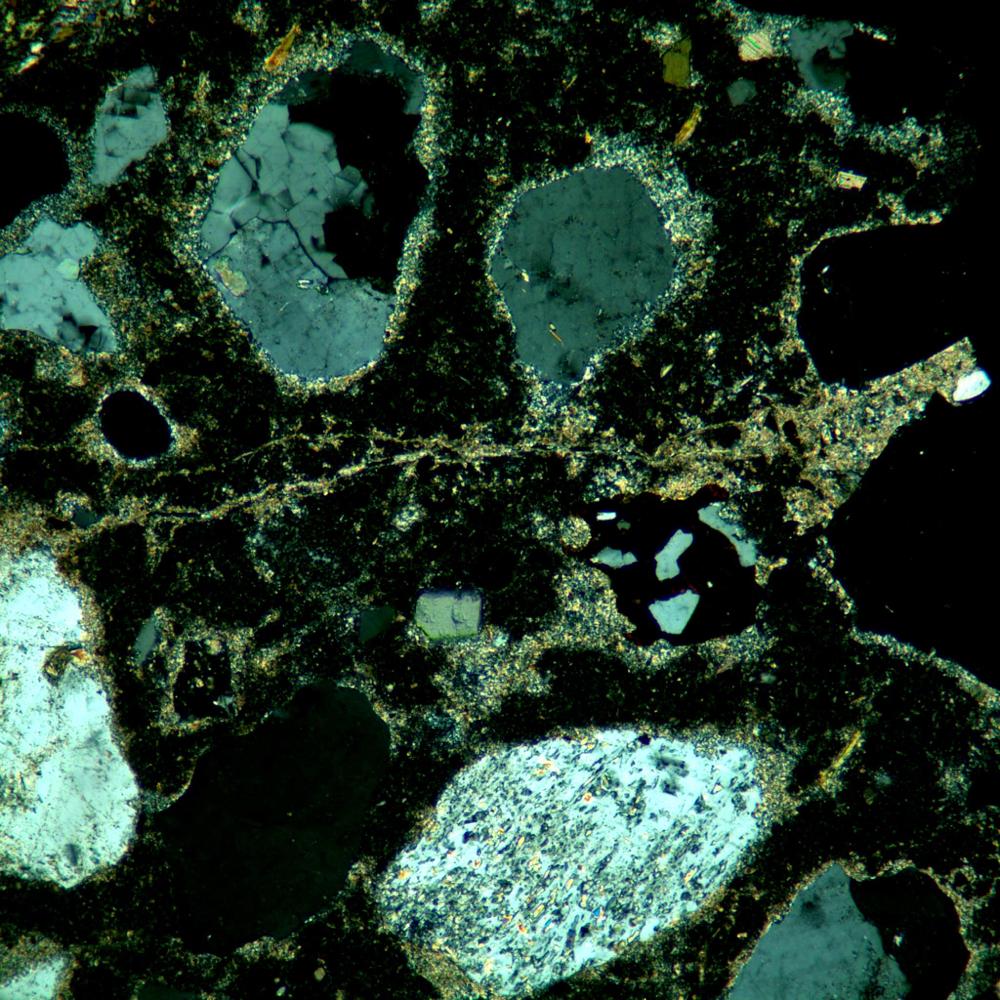Institutional

Historic Mortar Petrographic Evaluation
Braun Intertec petrographers often team with architects and preservationists to learn more about mortar samples taken from historic buildings. The information gathered provides useful data to preservationists who want to determine structure age, and are concerned with the appropriate restoration techniques to maintain historical integrity. When project architects wanted to find out if a mortar sample taken from a historic building near Granite Falls was part of the original circa 1858 structure, our petrographers were called upon to use both science and history to perform their in-depth investigation.
During our analysis, two details became obvious:
- The sand contained shells and shell fragments that suggested the mortar was constructed using straight river sand.
- There were numerous microscopic shrinkage cracks in the paste that indicated high lime content.
The clues began to come together. The petrographic evaluation revealed that the mortar’s paste contained no cement — only lime. The petrographers determined that unprocessed river sand was likely used to create the mortar. Additionally, because there were no Portland cement factories during that time and the samples lacked cement, Braun Intertec petrographers concluded that the mortar was more than likely original or at least 100 years old.